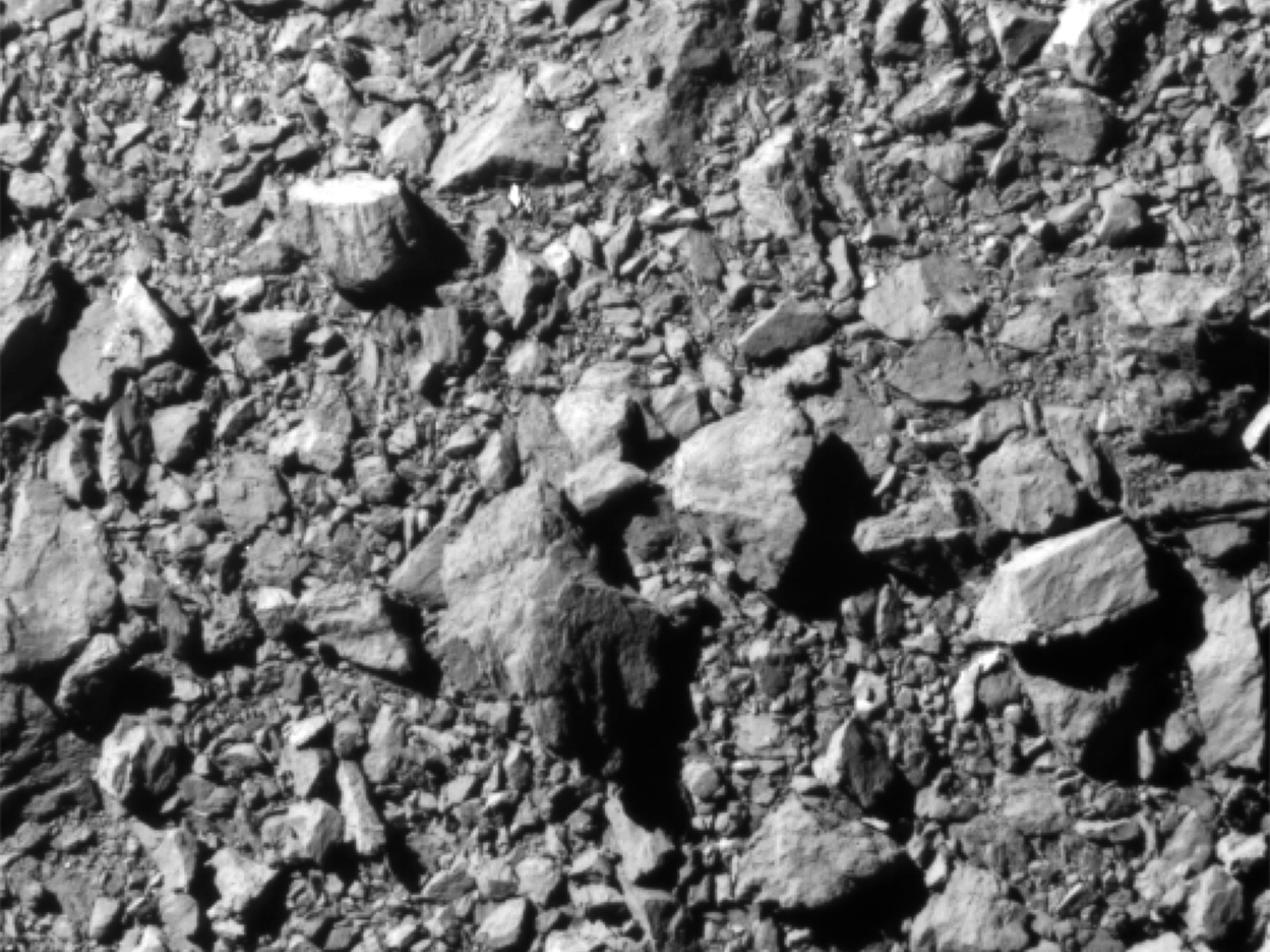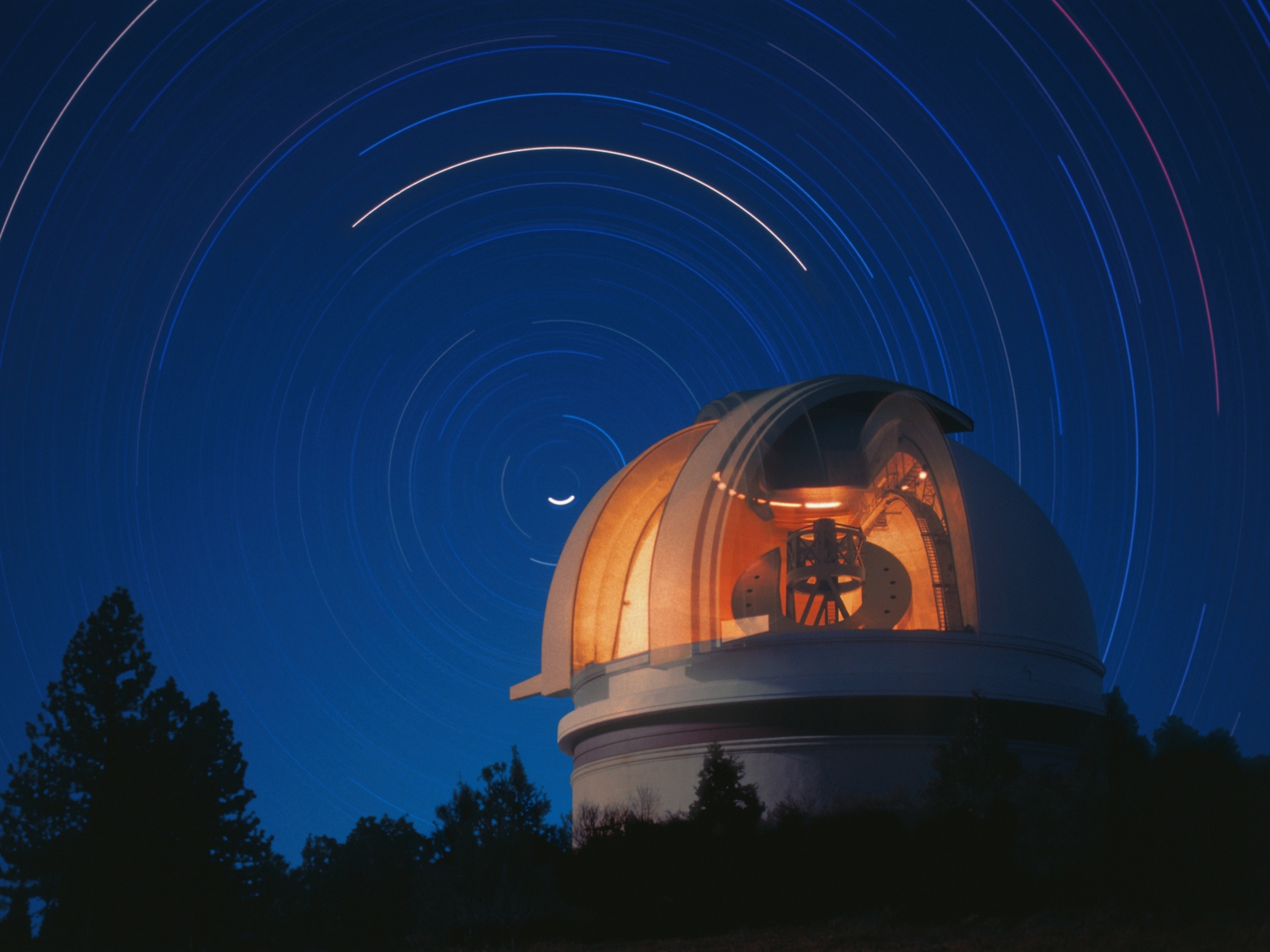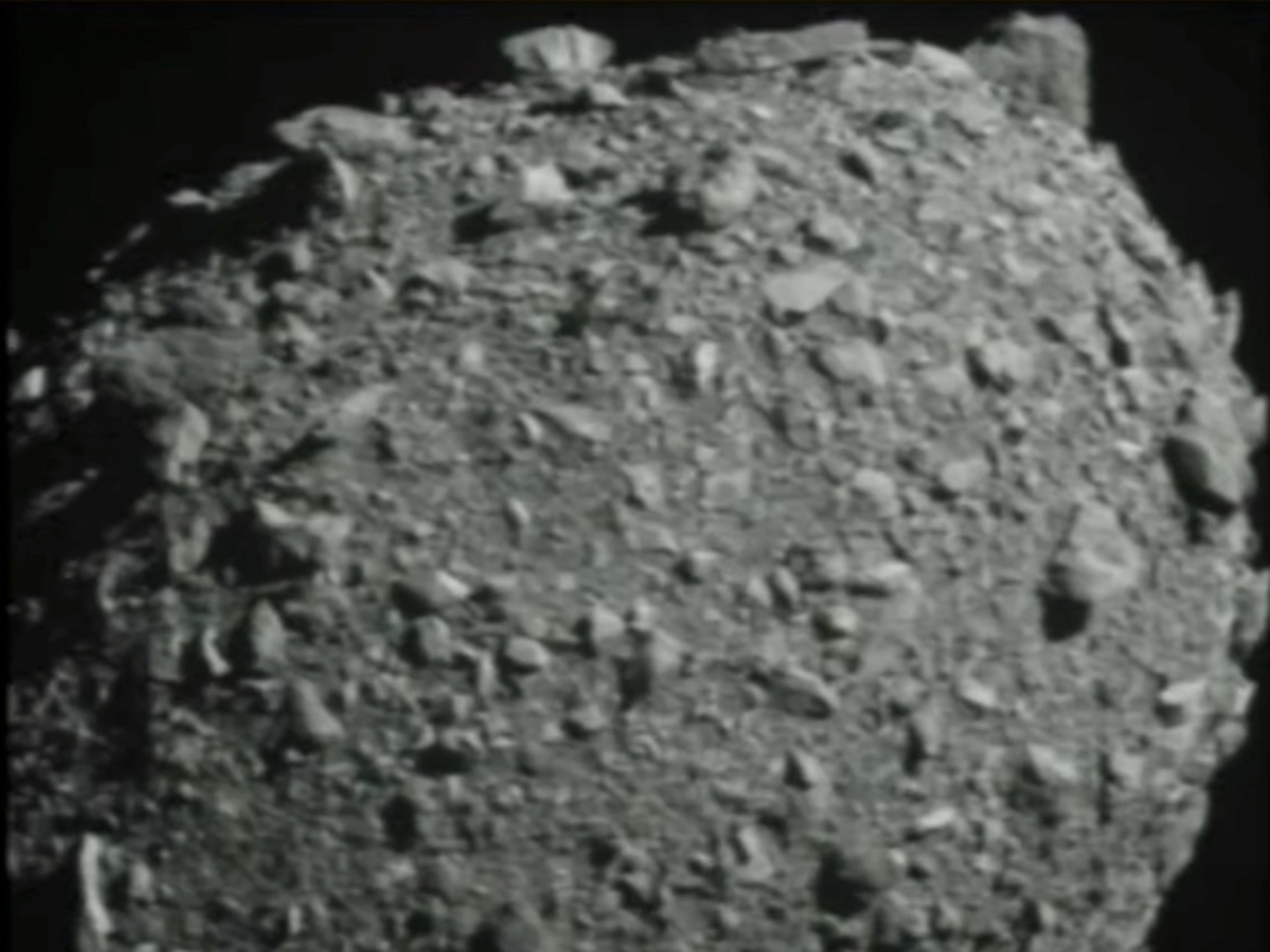From a distance, the asteroid Bennu looks like a thousand-foot-wide spinning top floating through space. But scientists now have a close-up view thanks to NASA’s OSIRIS-REx spacecraft, which is poised to sample the asteroid’s surface on October 20. The new observations show that Bennu’s terrain—and origins—are richer and more complex than any scientist could have dreamed.
In six studies published today in the journals Science and Science Advances, the OSIRIS-REx team presents new high-resolution mapping data, collected since the spacecraft’s 2018 arrival at Bennu. Taken together, the studies present fresh details about the smallest celestial body a spacecraft has ever orbited—data that fills a crucial gap in scientists’ understanding of asteroids.
Astronomers can map asteroids from a distance with telescopes, but only so well, down to areas the sizes of cities or states. Studying meteorites, which scientists can examine up close, helps fill in the small-scale details, but there’s only so much they can reveal. “These measurements help to link those two scales and help us to see details we wouldn’t be able to see otherwise,” says Andy Rivkin, a planetary scientist at Johns Hopkins University’s Applied Physics Laboratory who wasn’t involved with the Bennu studies.

This topsy-turvy asteroid in particular may hold clues to life’s ultimate origins, which is why NASA launched OSIRIS-REx in 2016 to sample its surface. Bennu is part of a population of asteroids known to contain carbon-bearing organic molecules—essential ingredients for life as we know it on Earth—as well as minerals altered in the presence of water. Researchers suspect that at least some of Earth’s water and organic molecules came from asteroids, so objects like Bennu may well have seeded Earth with the chemicals needed for life.
Bennu also poses a possible security risk to our home planet. Its orbit crosses Earth’s, and there’s a roughly 1-in-2,700 chance that it could collide with our home planet in the late 2100s, making careful study of the asteroid all the more important.
Watery origins
Though many of the boulders that make up Bennu date back to the solar system’s infancy, Bennu itself is a product of more recent chaos. Researchers think that about a billion years ago, a large collision in the asteroid belt destroyed a 60-mile-wide object. The cataclysm made a lot of debris, forming a population of smaller asteroids that includes Bennu.
When Bennu’s parent body was still young, it had enough heat to keep liquid water in its soils. As this water dribbled through the asteroid, it slowly deposited carbonate minerals within the fractures it passed through. Later, when gravity sculpted Bennu from the parent body’s debris, some of these primordial mineral veins survived intact, within boulders now strewn on Bennu’s surface.
The largest of these carbonate veins seen so far stretches more than three feet long. The veins’ width and size imply that for thousands—if not millions—of years, Bennu’s parent body had a sizable amount of hydrothermal activity.
“This is why we do spacecraft exploration,” says OSIRIS-REx team member and study co-author Hannah Kaplan, a planetary scientist at NASA’s Goddard Space Flight Center. “We didn’t expect to see these things, we cannot see them from Earth, and we needed to be orbiting pretty close up to the asteroid in order to see them.”
The carbonate veins came to light as OSIRIS-REx collected a massive amount of high-resolution data. Rivkin notes that one instrument aboard the spacecraft looked at the asteroid’s surface composition at a resolution down to the size of a basketball court. Another mapped Bennu’s color variation down to the size of a sheet of paper—and one instrument even imaged parts of Bennu’s surface down to the size of a postage stamp.
A strange little space rock
Bennu is a porous “rubble pile” asteroid loosely held together by its own feeble gravity, which is less than eight millionths of the gravity we feel on Earth. That makes exploring the odd world like an adventure in Wonderland.
In its time orbiting the asteroid, OSIRIS-REx has revealed all sorts of unexpected details. For one, it’s seen bizarre “popping rocks” eject from Bennu’s surface, likely due to the sun’s heating. The spacecraft even spotted chunks of another asteroid, Vesta, among Bennu’s asphalt-colored boulders by picking out rocks that contained Vesta’s calling-card mix of minerals.

In the new studies, researchers have found two distinct types of boulders on the surface, one stronger and one weaker. They also spotted subtle variations in the asteroid’s color, ability to retain heat, and local density, as well as the terrain of its northern and southern hemispheres. These factors may hint at how Bennu formed and has weathered over time in the vacuum of space.
OSIRIS-REx confirmed that carbon-bearing organic molecules cover nearly all of Bennu’s surface. Based on evidence from meteorites, scientists had long suspected that Bennu had these molecules in abundance. But confirming that theory builds confidence in the value of OSIRIS-REx’s October 20 “touch-and-go” sampling attempt.


In less than two weeks, the spacecraft will descend to a crater landing site called “Nightingale,” one of the many features across the asteroid that scientists have named for birds. In a matter of seconds, it will collect at least 60 grams of grains and pebbles from the asteroid. OSIRIS-REx will then ascend from the surface and make its way back to Earth, to arrive in 2023.
“Any sample that we bring back, regardless of the location, should have these hydrated minerals and it should have carbon-bearing material,” says OSIRIS-REx team member and study co-author Amy Simon, a senior scientist at NASA’s Goddard Space Flight Center.
Planning the “touch-and-go” maneuver has proven tricky. OSIRIS-REx was designed with the assumption that Bennu’s surface was covered in fine-grained material. Instead, it’s covered with boulders the size of small buildings. To safely chart a course to the surface, researchers had to fully map the asteroid to within several inches, and even upgrade the spacecraft’s navigation software in the middle of the mission.
With less than two weeks until that fateful sampling attempt, OSIRIS-REx’s scientists are feeling the excitement build.
“I’m not nervous yet—but if you ask me the day of, it’ll be a completely different story,” Simon says with a laugh. “Knock on wood, it’s been an incredible experience.”
Related Topics
You May Also Like
Go Further
Animals
- This fungus turns cicadas into zombies who procreate—then dieThis fungus turns cicadas into zombies who procreate—then die
- How can we protect grizzlies from their biggest threat—trains?How can we protect grizzlies from their biggest threat—trains?
- This ‘saber-toothed’ salmon wasn’t quite what we thoughtThis ‘saber-toothed’ salmon wasn’t quite what we thought
- Why this rhino-zebra friendship makes perfect senseWhy this rhino-zebra friendship makes perfect sense
Environment
- Your favorite foods may not taste the same in the future. Here's why.Your favorite foods may not taste the same in the future. Here's why.
- Are the Great Lakes the key to solving America’s emissions conundrum?Are the Great Lakes the key to solving America’s emissions conundrum?
- The world’s historic sites face climate change. Can Petra lead the way?The world’s historic sites face climate change. Can Petra lead the way?
- This pristine piece of the Amazon shows nature’s resilienceThis pristine piece of the Amazon shows nature’s resilience
- 30 years of climate change transformed into haunting music30 years of climate change transformed into haunting music
History & Culture
- When treasure hunters find artifacts, who gets to keep them?When treasure hunters find artifacts, who gets to keep them?
- Meet the original members of the tortured poets departmentMeet the original members of the tortured poets department
- When America's first ladies brought séances to the White HouseWhen America's first ladies brought séances to the White House
- Gambling is everywhere now. When is that a problem?Gambling is everywhere now. When is that a problem?
Science
- Quieting your mind to meditate can be hard. Here’s how sound can help.Quieting your mind to meditate can be hard. Here’s how sound can help.
- Should you be concerned about bird flu in your milk?Should you be concerned about bird flu in your milk?
- Here's how astronomers found one of the rarest phenomenons in spaceHere's how astronomers found one of the rarest phenomenons in space
- Not an extrovert or introvert? There’s a word for that.Not an extrovert or introvert? There’s a word for that.
Travel
- Photo story: a water-borne adventure into fragile AntarcticaPhoto story: a water-borne adventure into fragile Antarctica
- Germany's iconic castle has been renovated. Here's how to see itGermany's iconic castle has been renovated. Here's how to see it
- This tomb diver was among the first to swim beneath a pyramidThis tomb diver was among the first to swim beneath a pyramid
- Food writer Dina Macki on Omani cuisine and Zanzibari flavoursFood writer Dina Macki on Omani cuisine and Zanzibari flavours








